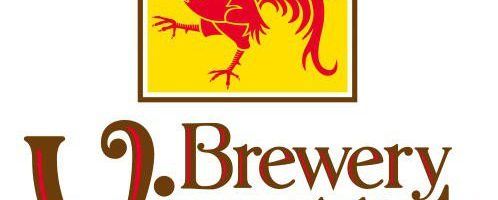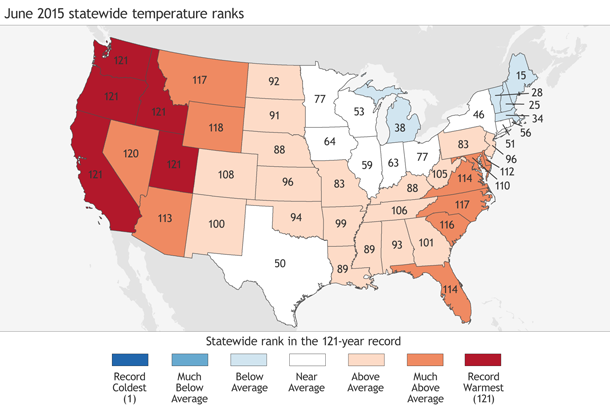Sustainability on Tap: Brewery Vivant, Climate Change, and American Craft Beer

As beer ingredients are threatened by climate change and energy prices rise, can small breweries learn something from the bigger players?
Craft breweries (breweries producing 15000 barrels of beer or fewer per year) are on the rise. [1] In the United States the craft segment grew by 12.8% in 2015 despite a 0.2% decline in the industry overall. [2] Beer is made from water, barley, hops, and yeast, but despite is simplistic recipe it is remarkably resource- and energy-intensive to produce: a liter of beer can require 7-10 liters of water to produce [3], and the brewing process alone can consume 7% of a brewery facility’s electricity and 45% of its natural gas [4]. Rising energy costs and resource pressures brought by global climate change are beginning to plague the beer industry at large, however. Brewery Vivant, a brewpub in Grand Rapids MI, has embraced sustainability since its inception. Its LEED certificate, granted in 2012, made it the first LEED-certified brewery in the country, and it publishes an annual sustainability report detailing green improvements in its facility. While increased demand drove increased usage of electricity (up 14.7%) and natural gas (up 2%) in 2015, Vivant’s involvement with carbon offsets decreased its overall carbon footprint by a net 27.1% [5]. As climate change threatens to make these resources more scarce, however, what can Vivant learn from other brewers?
California is a brewing capital – San Diego county alone boasts 130 active brewing operations [6]. However, California also finds itself the epicenter of a prolonged drought: over 60% of the state is in a state of at least Severe drought as of November 2016 [7]. This places a premium on water usage in the state. Northern California-based Sierra Nevada Brewing also publishes a report detailing green efforts. Since 2007, Sierra Nevada has reduced water required to produce one barrel of beer by 25%, and it set a goal in 2014 to achieve a process requiring only 4 liters of water per liter of product [8]. Sierra Nevada’s water reduction efforts range from straightforward (the use of desert-friendly landscaping) to more innovative (the phasing out of water-based lubricants on machinery). The need to conserve water is not lost on “big beer” either: multinational giant AB InBev recently achieved an industry-leading ratio of 3.2 liters of water per liter of beer produced [9]. While ratios this low would be extremely difficult for smaller players to achieve, they show that massive improvement on the status quo for beer production is possible.

Figure 1: June 2015 Temparature Records
The Yakima Valley in Washington state is a major source of hops used in American craft beer, and Washington state accounted for 73% of the American hop crop in 2015-2016 (10). In 2015 Washington was also one of the states affected by record-high temperatures (Figure 1), and while the temperatures only minimally affected the hop crop overall, certain commonly used varietals did yield more poorly [11][12]. Growers compensated by leaving land unplanted and concentrating irrigation resources on high-value hop crops, and by employing groundwater irrigation work-arounds. While the 2015-2016 yield was on the whole successful, hop shortage is ever-present in the minds of brewers, especially with so much of the crop concentrated in one geographic area. A hop crop can yield as much as $10,000 per acre, making smaller and more environmentally conscious organic operations an attractive financial prospect. Some breweries, like Sierra Nevada, have started small organic operations themselves, but one operation can yield enough hops for only one limited release of a single type of beer [13]. It remains to be seen how the agricultural industry will respond – hops are notoriously difficult to grow but extremely lucrative and significant additional scale is needed.
As for barley, the world’s largest brewers are pursuing more scientific means. AB InBev is pouring resources into its SmartBarley platform, which provides a suite of analysis and benchmarking tools to help its grower platform more effectively supply barley for brewing. The platform analyzes not only water usage, but also soil profiles, climate, and topography data to help farmers maximize yields per unit land [14]. The platform results in more productive agricultural practices that may filter into the industry as a whole, allowing barley for brewing to be provided for less resources. Danish brewing giant Carlsberg is employing a team of scientists to analyze barley genetically; they have already developed a strain that results in a beer that stays fresher longer, cutting down on spoiled beer waste [15].
As climate change puts a premium on resources, it is incumbent on brewers like Vivant to adapt with the changes. Smaller breweries will need to learn from the wealth of analysis provided by industry leaders to secure their ingredient supplies and to operate more sustainably. I hope sincerely that process innovations like the ones mentioned will allow craft brewing to weather the changes brought by climate change.
(Word Count 781)
Sources
[1] “Craft Beer Industry Market Segments.” Brewers Assocation. Brewers Association, n.d. Web. 3 Nov. 2016. <https://www.brewersassociation.org/statistics/market-segments/>.
[2] “National Beer Sales and Production Data.” Brewers Assocation. Brewers Association, n.d. Web. 3 Nov. 2016. <https://www.brewersassociation.org/statistics/national-beer-sales-production-data/>.
[3] Terry-Cobo, Sarah. “New Rankings Help You Drink Green Beer Year Round.” GreenBiz. GreenBiz, 12 Aug. 2009. Web. 3 Nov. 2016. <https://www.greenbiz.com/blog/2009/08/12/new-rankings-help-you-drink-green-beer-year-round>.
[4] Energy Usage, GHG Reduction, Efficiency and Load Management Manual. Rep. Brewers Association, n.d. Web. 3 Nov. 2016. <https://www.brewersassociation.org/attachments/0001/1530/Sustainability_Energy_Manual.pdf>.
[5] Beer the Change: Brewery Vivant’s 2015 Sustainability Report. Rep. Brewery Vivant, n.d. Web. 3 Nov. 2016. <http://media.wix.com/ugd/cb5d17_fa29806a424544b288f5530d335a4816.pdf>.
[6] “San Diego Brewery Watch.” West Coaster SD. West Coaster, 12 Oct. 2016. Web. 3 Nov. 2016. <http://www.westcoastersd.com/sd-brewing-industry-watch/>.
[7] U.S. Drought Monitor: California. United States Drought Monitor, 1 Nov. 2016. Web. 3 Nov. 2016. <http://droughtmonitor.unl.edu/Home/StateDroughtMonitor.aspx?CA>.
[8] Sierra Nevada Brewing Co. Biennial Sustainability Report 2015. Rep. Sierra Nevada Brewing Co., n.d. Web. 3 Nov. 2016. <http://www.cdn.sierranevada.com/sites/www.sierranevada.com/files/content/sustainability/reports/SustainabilityReport2015.pdf>.
[9] Anheuser Busch InBev 2014 Global Citizenship Report. Rep. Anheuser Busch InBev, n.d. Web. 3 Nov. 2016. <http://www.ab-inbev.com/content/dam/universaltemplate/abinbev/pdf/sr/global-citizenship-report/AB_InBev_GCR_2014.pdf>.
[10] Hop Acreage In Northwestern Region Up 17 Percent for 2016. Rep. National Agricultural Statistics Service, 10 June 2016. Web. 3 Nov. 2016. <https://www.nass.usda.gov/Statistics_by_State/Regional_Office/Northwest/includes/Publications/Hops/HOP06_1.pdf>.
[11] National Hop Report 2015. Rep. USDA, 17 Dec. 2015. Web. 3 Nov. 2016. <https://www.nass.usda.gov/Statistics_by_State/Regional_Office/Northwest/includes/Publications/Hops/Nat%20Hop%20Rept%202015.pdf>.
[12] Kennedy, Caitlyn. “Climate & Beer.” NOAA Climate.gov. NOAA, 12 Jan. 2016. Web. 3 Nov. 2016. <https://www.climate.gov/news-features/climate-and/climate-beer>.
[13] Greenaway, Twilight. “Your Organic Beer Just Got More Organic.” Takepart. Takepart, 11 June 2013. Web. 3 Nov. 2016. <http://www.takepart.com/article/2013/06/11/organic-beer-organic>.
[14] “SmartBarley FAQ.” SmartBarley, n.d. Web. 3 Nov. 2016. <http://www.smartbarley.com/en/faq.html>.
[15] Nurin, Tara. “In Race Against Climate Change, Innovations To This Ingredient Could Determine The Future of Brewing.” Forbes.com. Forbes, 31 Aug. 2016. Web. 3 Nov. 2016. <http://www.forbes.com/sites/taranurin/2016/08/31/in-race-against-climate-change-innovations-to-this-ingredient-could-determine-the-future-of-brewing/2/#19e666652eb5>.



Great post! It’s interesting to think about the proliferation of climate change and sustainability in the world today; despite craft beer being somewhat of a niche, “trendy” product, competitors are forced to account for climate change and incorporate its effects into their strategy.
After reading up on the industry a bit more, it sounds like some craft breweries are adopting a policy of “sustainable brewing” to ensure their supply chain, more broadly, is sustainable. I would be interested to know if Brewery Vivant has any sort of initiative to account for water usage throughout its supply chain? For example, are their suppliers of hops and barley abiding by sustainable practices? Are their bottle manufacturers sustainable as well?
Deschutes is one example of a craft brewery pursuing a “sustainable brewing” approach. http://www.bizjournals.com/portland/blog/sbo/2016/02/deschutes-looks-to-impact-supply-chain-for-beer.html
As we saw in the IKEA case, vertical integration can be helpful if pursuing a sustainable supply chain throughout. Obviously, this is not feasible for small craft breweries, but it will be interesting to see if this trend takes off in the larger beverage / beer companies in years to come!
Great read – thanks again for sharing!
Great post, Ben!
Really enjoyed how you broke down just how energy intensive brewing is. It is definitely a difficult process to make sustainable – from growing the inputs, to boiling the entire volume of wort used, to sterilizing all equipment involved, it is definitely a resource-intensive product compared to other beverages. In my own brewing I try to keep the process sustainable, but with poor economies of scale I end up using about 5 gallons of water to yield one gallon of beer (very embarrassing). It makes sense that these same poor economies of scale would work against smaller brewers.
To echo Emily’s point, the fragmented nature of craft beer (which is kind of the whole reason it is cool) makes it difficult to get the benefits of vertical integration in terms of operations. I’m curious as to whether craft brewers could form a collective such as we saw in National Cranberry to get some increased buying power for agricultural inputs. This may make it more affordable to source agricultural inputs sustainably.
Thanks for sharing!